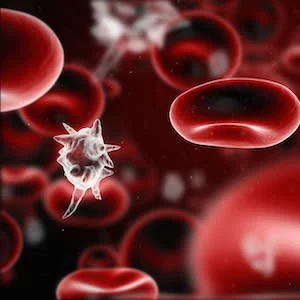Sepsis is characterised by hypovolaemia and vasodilation. It is also characterised by organ dysfunction secondary to a dysregulated immune response of the host to the microbial pathogen. Prompt identification, early treatment with appropriate antibiotics, and fluid resuscitation can improve patient outcomes. Patients with cirrhosis and sepsis are a distinct group. The haemodynamic alterations are more profound in these patients than in those without cirrhosis.
Albumin is recommended for most indications in patients with advanced cirrhosis. However, data related to sepsis-induced hypotension is scarce. Albumin has an immunomodulatory action, expands the intravascular volume, and strengthens the colloid osmotic pressure. It also improves cardiocirculatory function and reduces proinflammatory cytokine levels in cirrhosis and sepsis.
The choice of resuscitation fluid in patients with cirrhosis and sepsis-induced hypotension is unclear. In the FRISC study, 5% albumin was found to be superior to normal saline.
In this study, the researchers compare the efficacy and safety of 20% albumin to plasmalyte in reversing sepsis-induced hypotension. The study included critically ill patients with cirrhosis who received either 20% albumin or plasmalyte. The study's primary endpoint was the attainment of mean arterial pressure (MAP) above 65 mmHg at 3 hours.
As per the study results, baseline characteristics, including arterial lactate, MAP, and SOFA score, were comparable in albumin and plasmalyte groups. Most patients were alcoholics and suffered from pneumonia. In the intention-to-treat analysis, albumin was found to be superior to plasmalyte in achieving the primary endpoint. In addition, patients in the albumin group showed a faster decline in arterial lactate, a reduced need for dialysis, and a longer time to initiation of dialysis. However, the 28-day mortality rate was not different between the two groups. Treatment had to be discontinued in 22% of patients in the albumin group due to adverse effects compared to no discontinuations in the plasmalyte group.
These findings show that in patients with cirrhosis and sepsis-induced hypotension, 20% albumin leads to a faster improvement in haemodynamics and lactate clearance than plasmalyte. 28-day survival was similar in both groups. Patients on 20% albumin needed to be closely monitored as it was more often associated with pulmonary complications. Overall, plasmalyte was found to be safer and well-tolerated and can be considered for volume resuscitation in patients with cirrhosis and sepsis-induced hypotension.
For more Sepsis news Click here
Source: Journal of Hepatology
Image Credit: iStock











